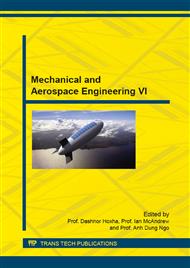p.70
p.75
p.85
p.92
p.97
p.102
p.113
p.119
p.125
Cascading Analysis Using Discrete Element Method in Rotary Drum Coolers
Abstract:
Discrete Element Methods have been used extensively in processes involving flow behavior where modeling the individual particles is of particular interest. A rotary cooler is an application of one such process. Although the current analysis can be used to any type of rotary cooler or rotary dryer, this work is focused on the analysis of particles falling from lifters in a planetary rotary cooler used in the production of clinker and installed at the outlet of a rotary kiln. Clinker is the main raw material used to manufacture cement. The objective of this work is to model the particle distribution inside the equipment due to different types of lifters and process conditions. Some of the parameters evaluated demonstrate that the tangential restitution coefficient and the Young’s modulus do not influence the results. However, a rolling friction coefficient on the order of 10-3 is required to represent a real operating condition. The results produce cascading similar to that of experimental observations reported in literature. Both our results and previously reported data display two distinct areas in the rotary drum, one mainly composed of material (the curtain area) and the other lacking material (the air area).
Info:
Periodical:
Pages:
97-101
Citation:
Online since:
October 2015
Keywords:
Price:
Сopyright:
© 2015 Trans Tech Publications Ltd. All Rights Reserved
Share:
Citation:


